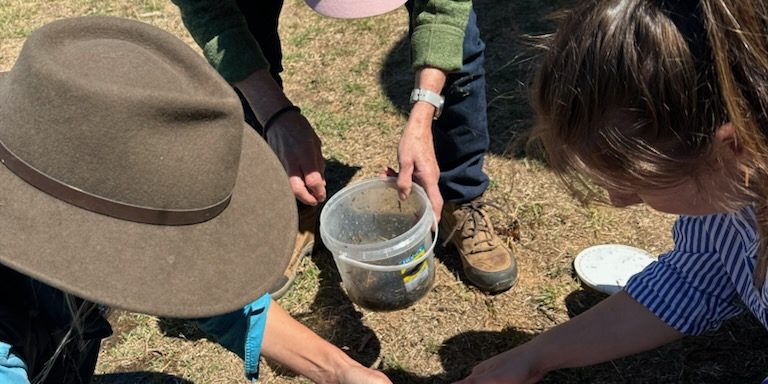Did you know that dung beetles can bury manure up to 2m down into the soil, reducing fertiliser needs and increasing water infiltration?
Young District Landcare (YDL) and Harden Murrumburrah Landcare groups recently gathered to explore how dung beetles contribute to soil health and nutrient cycling on farm. Combined with the YDL bimonthly grazing group meeting, the workshop included cleaning and sorting of dung beetles collected from the landholders’ properties. This not only contributed to knowledge of what species are found around Harden but to exchange beetles with landholders from South Western Australia to increase the species and genetic diversity of beetles in their region.
It is known that different species are active across seasons, therefore, several dung beetle species are needed to function all year round and bury that valuable manure. Stock drenching and use of other chemicals can impact upon populations, and knowledge is power in planning timing of chemical use to reduce the detrimental impacts on the dung beetle populations.
On the day, we hit a road bump when the main presenter was unable to attend at the last minute. However, the group harnessed the existing knowledge and shared what they knew between them. By washing the beetles, separating them from organic matter and looking at the range of species found on each property, we enabled a rich learning experience for all involved.
What a great example of the power of people together to share and learn.
This workshop was a collaboration between Murrumbidgee Landcare Inc. and Southern Forests Community Landcare WA, who are working on a project to boost dung beetle numbers in WA and provided funding for the initiative. Learn more here: Dung Beetles in the South West







